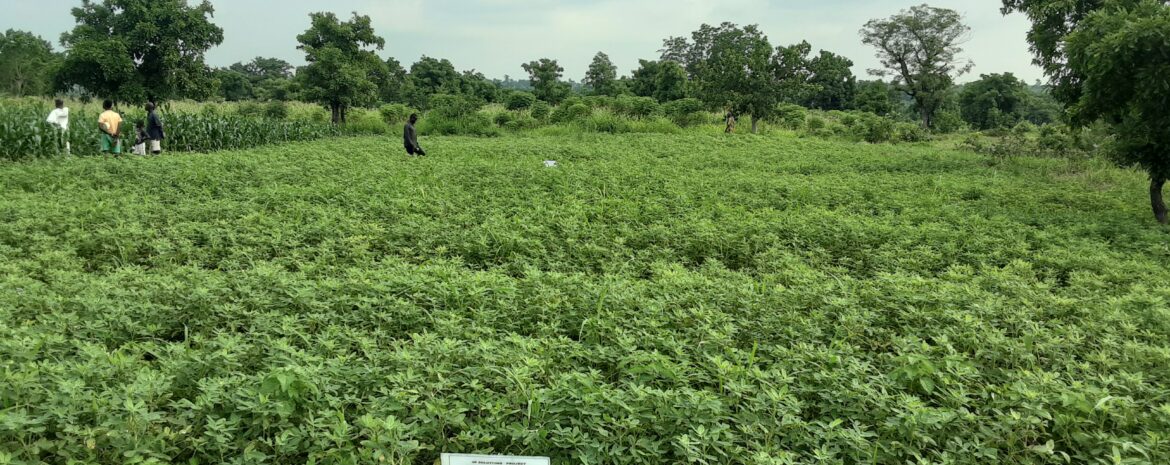From Soil to Sustenance: The Critical Role of Carbon in Agriculture
Contributor : Sara Lamsili, Jnr Project Communication Manager
In conversations about climate change and sustainability, carbon is often portrayed as a villain in the climate change and sustainability debate due to its obvious role in global warming. Its increased presence in the atmosphere intensifies climate risks faced by the humanity.
However, in the context of soil, carbon plays a very different and critically important role. Soil organic carbon (SOC), the carbon stored in the form of decomposed plant and animal remains, is one of the most essential components of healthy soils. It influences everything from fertility and water retention to climate resilience and long-term food production. Simply put, without soil carbon, agriculture cannot thrive (FAO, 2017).
Soil organic carbon is the foundation of soil health. It improves soil structure by binding particles together, allowing for better aeration and water infiltration. It also increases the soil’s ability to hold water, an increasingly important trait in the face of rising droughts and enhances the availability of key nutrients to plants (Lal, 2004). Soils rich in carbon are more biologically active, supporting a diverse community of microbes that help break down organic matter, capture and release nutrients, and suppress disease (Lehmann & Kleber, 2015). These microorganisms form the engine of nutrient cycling, and they rely heavily on carbon as a food source.
The decline of soil carbon is not just an environmental issue; it’s a direct threat to food security. When soil loses its organic matter, it becomes compacted, infertile, and prone to erosion. This leads to lower crop yields, and a loss of ecosystem services (Montanarella & Vargas, 2012). Decades of continuous cultivation, deforestation, and poor land management have resulted in severe carbon depletion in African soils. Rebuilding this lost carbon is essential to restore soil productivity and ensure sustainable food production (FAO & ITPS, 2015).
Beyond its role in productivity, soil carbon is also a crucial ally in the fight against climate change. Soils act as one of the world’s largest carbon sinks. When managed properly, they can absorb atmospheric carbon dioxide, primarily mediated by plants through photosynthesis, and store in stable forms for decades or even centuries.
This process, known as carbon sequestration, not only reduces greenhouse gas concentrations but also helps improve soil function (Lal, 2004). Therefore, climate-smart agricultural practices that increase soil carbon levels offer a dual benefit: they help mitigate climate change while enhancing the resilience of farming systems (Smith et al., 2008).
Restoring soil carbon requires a shift toward more regenerative and context-sensitive agricultural practices. These include cover cropping, reduced or no tillage, crop rotation, balanced fertilization, integration of agroforestry systems, and the use of organic amendments such as manure or biochar (Paustian et al., 2016; Yves et al., 2023). While no single practice serves as a magical fix, a combination of these techniques, adapted to local conditions, can lead to meaningful increases in soil organic carbon over time.
Investing in soil carbon is not just good science, it is good policy. It supports smallholder farmers, strengthens local food systems, and contributes to broader environmental goals. As global demand for food rises alongside increasing climatic pressures, protecting and enhancing the organic carbon content of soils must be at the center of any serious strategy for agricultural sustainability (FAO, 2017).
Ultimately, the health of our soils mirrors the health of our societies. Rebuilding carbon stocks is a long-term commitment, but it is one that pays dividends, for the environment, for farmers, and for future generations. It’s time we put carbon back where it belongs: in the soil, supporting life.
References
FAO. (2017). Unlocking the potential of soil organic carbon. Food and Agriculture Organization of the United Nations. https://www.fao.org/documents/card/en/c/I8891EN
FAO & ITPS. (2015). Status of the world’s soil resources (SWSR) – Main report. Food and Agriculture Organization of the United Nations and Intergovernmental Technical Panel on Soils.
Lal, R. (2004). Soil carbon sequestration impacts on global climate change and food security. Science, 304(5677), 1623–1627. https://doi.org/10.1126/science.1097396
Lehmann, J., & Kleber, M. (2015). The contentious nature of soil organic matter. Nature, 528(7580), 60–68. https://doi.org/10.1038/nature16069
Montanarella, L., & Vargas, R. (2012). Global governance of soil resources as a necessary condition for sustainable development. Current Opinion in Environmental Sustainability, 4(5), 559–564. https://doi.org/10.1016/j.cosust.2012.08.009
Paustian, K., Lehmann, J., Ogle, S., Reay, D., Robertson, G. P., & Smith, P. (2016). Climate-smart soils. Nature, 532(7597), 49–57. https://doi.org/10.1038/nature17174
Smith, P., Martino, D., Cai, Z., Gwary, D., Janzen, H., Kumar, P., … & Smith, J. (2008). Greenhouse gas mitigation in agriculture. Philosophical Transactions of the Royal Society B: Biological Sciences, 363(1492), 789–813. https://doi.org/10.1098/rstb.2007.2184
Yves N’Dri Bohoussou, Han Shou‐Wei, Li Hao‐Ran, Kouadio Yao Dinard, Ejaz Irsa, Virk, Ahmad Latif, Dang, Yash & Zhao, Xin & Zhang, Hailin. (2023). Effects of fertilizer application strategies on soil organic carbon and total nitrogen storage under different agronomic practices: A meta‐analysis. Land Degradation & Development. 34. 5889-5904. 10.1002/ldr.4885.

